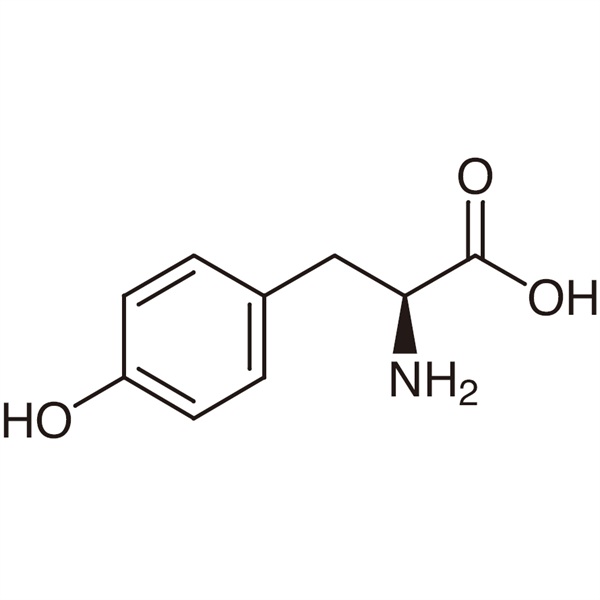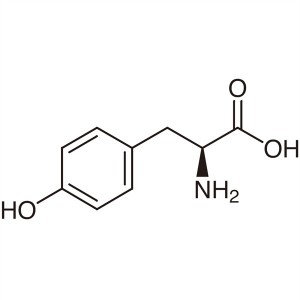L-(-)-Tyrosine CAS 60-18-4 (H-Tyr-OH) Assay 98.5~101.5% Factory High Quality
Shanghai Ruifu Chemical Co., Ltd. is the leading manufacturer and supplier of L-(-)-Tyrosine (H-Tyr-OH; Tyr or Y) (CAS: 60-18-4) with high quality. Ruifu Chemical supplys a series of amino acids and derivatives. We can provide COA, worldwide delivery, small and bulk quantities available. If you are interested in L-(-)-Tyrosine, Please contact: alvin@ruifuchem.com
| Chemical Name | L-(-)-Tyrosine |
| Synonyms | H-Tyr-OH; L-Tyrosine; L-Tyr; Abbreviated Tyr or Y; p-Tyrosine; Tyrosine; (S)-2-Amino-3-(4-Hydroxyphenyl)propionic acid; 3-(4-Hydroxyphenyl)-L-Alanine |
| Stock Status | In Stock, Production Capacity 2000 Tons per Year |
| CAS Number | 60-18-4 |
| Molecular Formula | C9H11NO3 |
| Molecular Weight | 181.19 |
| Melting Point | >300℃(dec.) (lit.) |
| Flash Point | 176℃ |
| Density | 1.34 |
| Sensitive | Sensitive to Light |
| Water Solubility | Insoluble in Water, 0.5 g/l 25℃ |
| Solubility | Soluble in Hydrochloric Acid. Solubility in 1mol/L HCl Almost Transparency |
| Solubility | Insoluble in Ethanol and Ether, Alcohol, Acetone |
| Stability | Stable. Incompatible with Strong Oxidizing Agents, Strong Reducing Agents |
| Storage Temp. | Sealed in Dry, Store at Room Temperature |
| COA & MSDS | Available |
| Brand | Ruifu Chemical |
| Hazard Codes | Xi | RTECS | YP2275600 |
| Risk Statements | 36/37/38-40 | TSCA | Yes |
| Safety Statements | 26-36-37/39-22 | HS Code | 2922509099 |
| WGK Germany | 3 |
|
Items |
Inspection Standards |
Results |
|
Appearance |
White Crystals or Crystalline Powder |
Conforms |
| Odor |
Tasteless |
Conforms |
|
Identification |
Infrared Absorption |
Conforms |
|
Specific Rotation |
-9.8° to -11.2°(C=4, H2O) |
-11.0° |
|
Transmittance |
≥98.0% |
98.5% |
|
Heavy Metal (as Pb) |
≤10ppm |
Conforms |
|
Loss on Drying |
≤0.20% |
0.16% |
|
Residue on Ignition |
≤0.20% |
0.04% |
|
Chloride (Cl) |
≤0.04% |
<0.04% |
|
Ammonium (NH4) |
≤0.02% |
<0.02% |
|
Sulfate (SO4) |
≤0.02% |
≤0.02% |
|
Iron (Fe) |
≤10ppm |
Conforms |
|
Arsenic (AS2O3) |
≤1.0ppm |
Conforms |
|
Other Amino Acids |
Chromatographically Not Detectable |
Conforms |
|
Assay (HPLC) |
98.5%-101.5% |
99.65% |
|
pH |
5.0~6.5 |
5.6 |
|
Origin |
From Non-Animal Source |
Conforms |
|
Organic Volatile Impurities |
Meet the Specification |
Conforms |
|
Test Standard |
AJI-97; USP37 |
Conforms |
|
Shelf Life |
36 Months From Manufacture Date if Stored Properly |
|
|
Main Usage |
Amino Acids; Food Additives; Pharmaceutical Intermediates |
|
L-(-)-Tyrosine (H-Tyr-OH) (CAS: 60-18-4) AJI 97 Test Method
Identification: Compare the infrared absorption spectrum of the sample with that of the standard by potassium bromide disc method.
Specific Rotation [α]20/D: Dried Sample, C=5, 1mol/L HCl
State of Solution (Transmittance): 0.5g in 10ml of 1mol/L HCl, spectrophotometer, 430nm, 10mm cell thickness.
Chloride (Cl): 0.7g, A-1, ref: 0.40ml of 0.01mol/L HCl
Ammonium (NH4): B-2
Sulfate (SO4): 1.2g, (1), ref: 0.50ml of 0.005mol/L H2SO4
Iron (Fe): 1.5g, (2), ref: 1.5ml of Iron Std. (0.01mg/ml)
Heavy Metals (Pb): 2.0g, (2), ref: 2.0ml of Pb Std. (0.01mg/ml)
Arsenic (As2O3): 2.0g, (2), ref: 2.0ml of As2O3 Std.
Other Amino Acids: Dilute ammonia R2 Test Sample: 50μg, F-6-a, control: L-Tyr 0.25μg
Loss on Drying: at 105℃ for 3 hours.
Residue on Ignition (Sulfated): AJI Test 13
Assay: Dried sample, 180mg, (1), 6ml of formic acid, 50ml of glacial acetic acid, 0.1mol/L HCLO4 1ml=18.119mg C9H11NO3
pH Test: 0.02g in 100ml saturated aqueous solution
L-(-)-Tyrosine (H-Tyr-OH) (CAS: 60-18-4) USP35 Test Method
DEFINITION
Tyrosine contains NLT 98.5% and NMT 101.5% of L-Tyrosine (C9H11NO3), calculated on the dried basis.
IDENTIFICATION
A. INFRARED ABSORPTION <197K>
ASSAY
PROCEDURE
Sample: 180 mg of Tyrosine
Blank: Mix 6 mL of formic acid and 50 mL of glacial acetic acid.
Titrimetric system
(See Titrimetry <541>)
Mode: Direct titration
Titrant: 0.1 N perchloric acid VS
Endpoint detection: Potentiometric
Analysis: Dissolve the Sample in 6 mL of formic acid and 50mL of glacial acetic acid, and titrate with the Titrant. Perform the Blank determination.
Calculate the percentage of tyrosine (C9H11NO3) in the Sample taken:
Result = {[(VS-VB) x N x F]/W} x100
VS= volume of Titrant consumed by the Sample (mL)
VB= volume of Titrant consumed by the Blank (mL)
N= actual normality of the Titrant (mEq/mL)
F= equivalency factor, 181.2 mg/mEq
W= Sample weight (mg)
Acceptance criteria: 98.5%~101.5% on the dried basis
IMPURITIES
RESIDUEON IGNITION <281>: NMT 0.4%
CHLORIDE AND SULFATE, Chloride <221>
Standard solution: 0.20mL of 0.020 N hydrochloric acid
Sample: 0.35 g of Tyrosine. [NOTE-If necessary, dissolve the Sample by heating to near boiling and adding 1 mL of nitric acid.]
Acceptance criteria: NMT 0.04%
CHLORIDE AND SULFATE, Sulfate <221>
Standard solution: 0.50mL of 0.020 N sulfuric acid
Sample: 1.2 g of Tyrosine. [NOTE-If necessary, dissolve the Sample by adding 6 mL of diluted hydrochloric acid.]
Acceptance criteria: NMT 0.04%
IRON <241>: NMT 30ppm [NOTE-If necessary, use 2 mL of hydrochloric acid to dissolve the Sample.]
HEAVY METALS, Method I <231>: NMT 15ppm
RELATED COMPOUNDS
Diluted ammonia solution: Dilute 16 mL of concentrated ammonia with water to 100 mL.
System suitability solution: Dissolve 10 mg of USP L-Tyrosine RS and 10 mg of USP L-Phenylalanine RS in 1 mL of Diluted ammonia solution, and dilute with water to 25.0 mL.
Standard solution: In a suitable flask, dissolve a quantity of USP L-Tyrosine RS in 1 mL of Diluted ammonia solution. Dilute with water to volume to obtain a solution of 0.05mg/mL. [NOTE-This solution has a concentration equivalent to 0.5% of that of the Sample solution.]
Sample solution: Transfer 0.1 g of Tyrosine into a 10-mL volumetric flask, add sufficient Diluted ammonia solution to dissolve, and dilute with water to volume.
Chromatographic system (See Chromatography <621>, Thin-Layer Chromatography.)
Mode: TLC
Adsorbent: 0.25-mm layer of chromatographic silica gel mixture
Application volume: 5μL
Developing solvent system: Isopropyl alcohol and ammonium hydroxide (7:3)
Spray reagent: 2 mg/mL of ninhydrin in a mixture of butyl alcohol and 2N acetic acid (95:5)
System suitability
Suitability requirements: The chromatogram of the System suitability solution exhibits two clearly separated spots.
Analysis
Samples: System suitability solution, Standard solution, and Sample solution.
Dry the plate between 100° and 105° until the ammonia disappears completely. Spray with Spray reagent, and heat between 100° and 105° for 15 min. Examine the plate under white light.
Acceptance criteria: Any secondary spot of the Sample solution is not larger or more intense than the principal spot of the Standard solution.
Any Individual impurities: NMT 0.5%
Total impurities: NMT 2.0%
SPECIFIC TESTS
OPTICAL ROTATION, Specific Rotation <781S>
Sample solution: 50 mg/mL in 1 N hydrochloric acid
Acceptance criteria: -9.8° to -11.2°
LOSSON ON DRYING <731>: Dry a sample at 105℃ for 3 h: it loses NMT 0.3% of its weight.
ADDITIONAL REQUIREMENTS
PACKAGING AND STORAGE: Preserve in well-closed containers.
USP REFERENCE STANDARDS <11>
USP L-Phenylalanine RS
USP L-Tyrosine RS
Package: Fluorinated Bottle, Aluminum foil bag, 25kg/Cardboard Drum, or according to customer's requirement.
Storage Condition: Store in sealed containers at cool, dry and ventilated warehouse away from incompatible substances. Protect from light and moisture.
How to Purchase? Please contact Dr. Alvin Huang: sales@ruifuchem.com or alvin@ruifuchem.com
15 Years Experience? We have more than 15 years of experience in the manufacture and export of a wide range of high quality pharmaceutical intermediates or fine chemicals.
Main Markets? Sell to domestic market, North America, Europe, India, Korea, Japanese, Australia, etc.
Advantages? Superior quality, affordable price, professional services and technical support, fast delivery.
Quality Assurance? Strict quality control system. Professional equipment for analysis include NMR, LC-MS, GC, HPLC, ICP-MS, UV, IR, OR, K.F, ROI, LOD, MP, Clarity, Solubility, Microbial limit test, etc.
Samples? Most products provide free samples for quality evaluation, shipping cost should be paid by customers.
Factory Audit? Factory audit welcome. Please make an appointment in advance.
MOQ? No MOQ. Small order is acceptable.
Delivery Time? If within stock, three days delivery guaranteed.
Transportation? By Express (FedEx, DHL), by Air, by Sea.
Documents? After sales service: COA, MOA, ROS, MSDS, etc. can be provided.
Custom Synthesis? Can provide custom synthesis services to best fit your research needs.
Payment Terms? Proforma invoice will be sent first after confirmation of order, enclosed our bank information. Payment by T/T (Telex Transfer), PayPal, Western Union, etc.
L-(-)-Tyrosine (H-Tyr-OH) (CAS: 60-18-4) is one of the 22 proteinogenic amino acids that are used by cells to synthesize proteins. L-Tyrosine is an important nutrient essential amino acid, which plays an important role in the metabolism, growth and development of humans and animals, and is widely used in food, feed, health care products and chemical industries. 1. Food Additives. aWidely used in agricultural scientific research, but also as a beverage additive and preparation of artificial insect feed, etc. 2. L-Tyrosine is an important biochemical reagent and the main raw material for the synthesis of polypeptide hormones, antibiotics, l-dopa and other drugs. It is a precursor to epinephrine, norepinephrine and dopamine, three important neurotransmitters.; 3. L-Tyrosine can be used in pharmaceutical interdediates, biochemical study, life sciences, agricultural research, beverage additive and feed stuff, etc; 4. L-Tyrosine helps to calm the body, increase energy and enhance libido; 5. Tyrosine protects the skin from harmful UV light rays; 5. Medicine for hyperthyroidism. Tyrosine boosts one's mood, concentration, learning, and memory. 6. It is used in suntan accelerators and in skin-bronzing cosmetics to accelerate the tanning process. 7. Also available as modulation for rhe eldee, children's food and nutrition agents of plant leaves. 8. L-Tyrosine food spices for food flavor preparation should not exceed the maximum allowable amount and the maximum allowable residues of each perfume ingredient in the GB 2760. 9. Amino acid drugs. Amino acid infusion and amino acid compound preparation of raw materials, as nutritional supplements. Treatment of poliomyelitis and sex nuclear encephalitis, hyperthyroidism and other diseases. It is also used as a raw material for the manufacture of diiodotyrosine, dibromotyrosine and L-dopa.
-
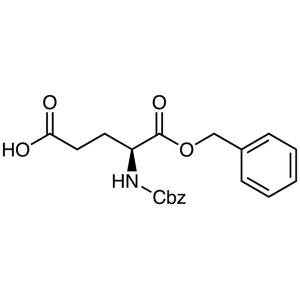
Z-Glu-OBzl CAS 3705-42-8 Purity >98.0% (HPLC) (...
-
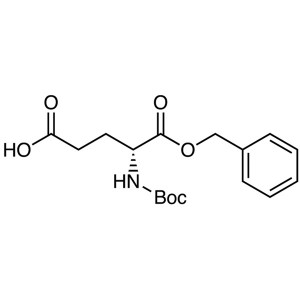
Boc-D-Glu-OBzl CAS 34404-30-3 Purity >99.0% (HP...
-
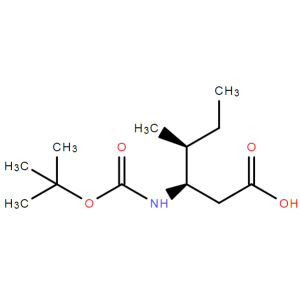
Boc-β-HoIle-OH CAS 218608-82-3 Assay >96.0% (TLC)
-
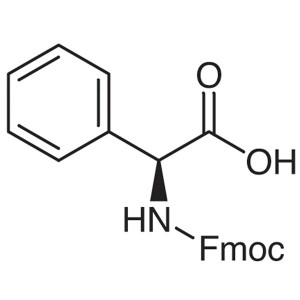
Fmoc-Phg-OH CAS 102410-65-1 Purity >98.5% (HPLC...
-
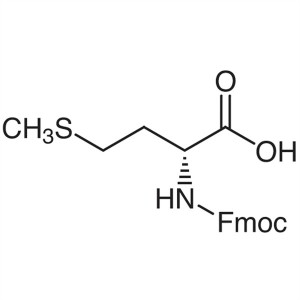
Fmoc-D-Met-OH CAS 112883-40-6 Fmoc-D-Methionine...
-
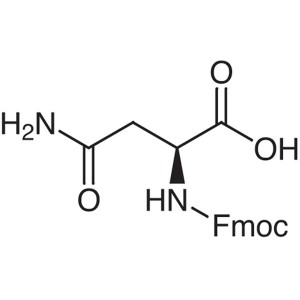
Fmoc-Asn-OH CAS 71989-16-7 Fmoc-L-Asparagine Pu...

